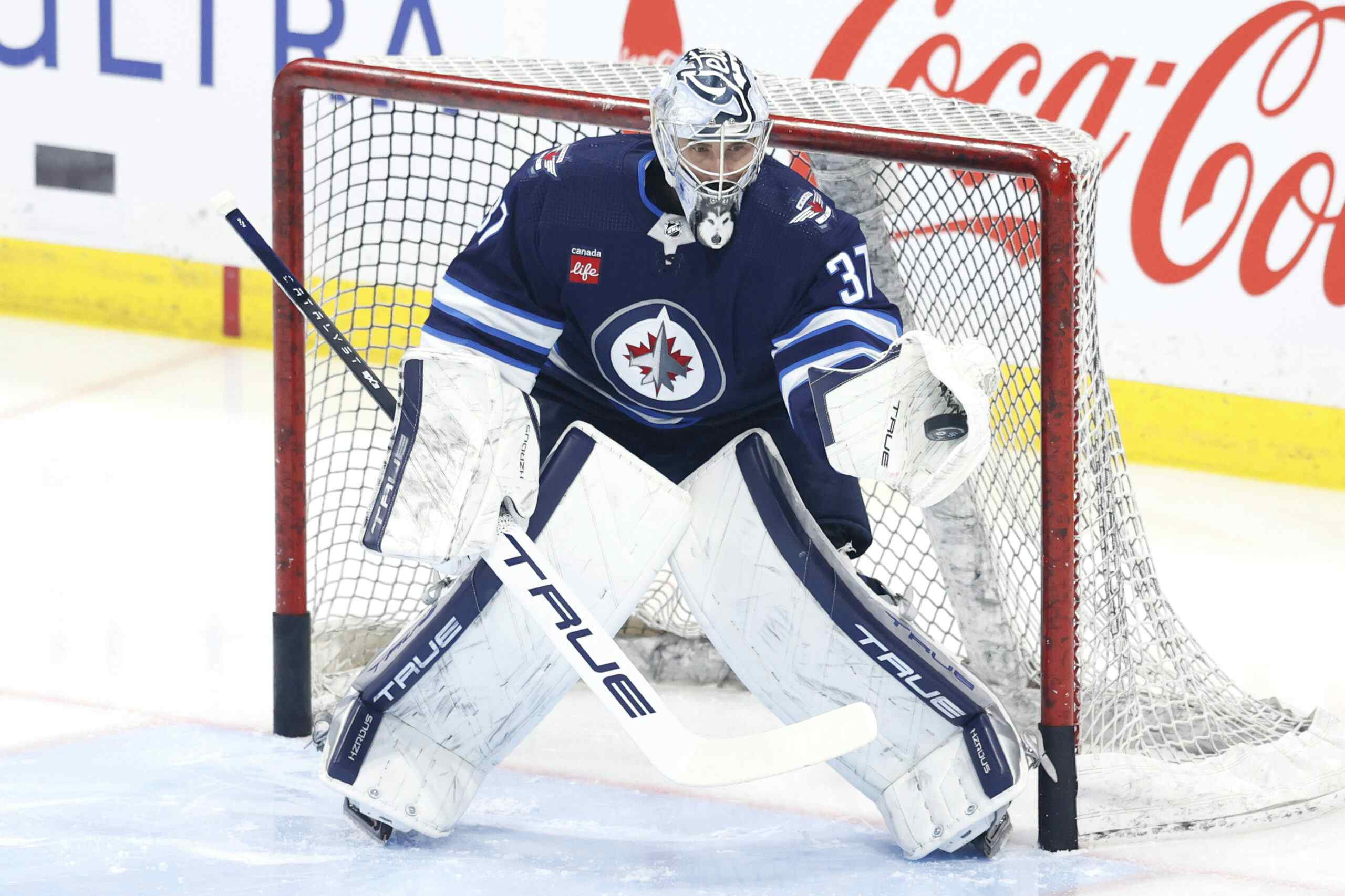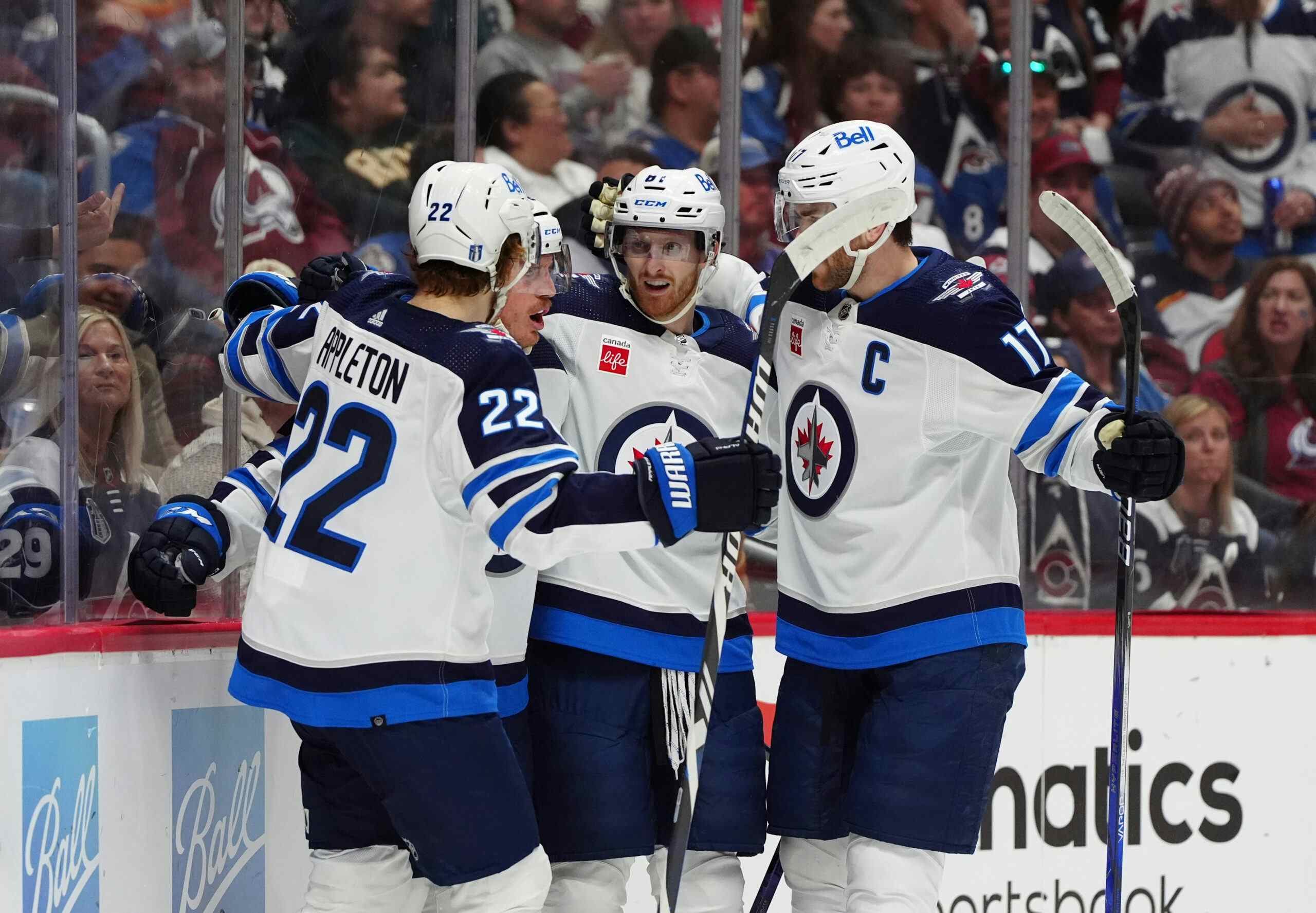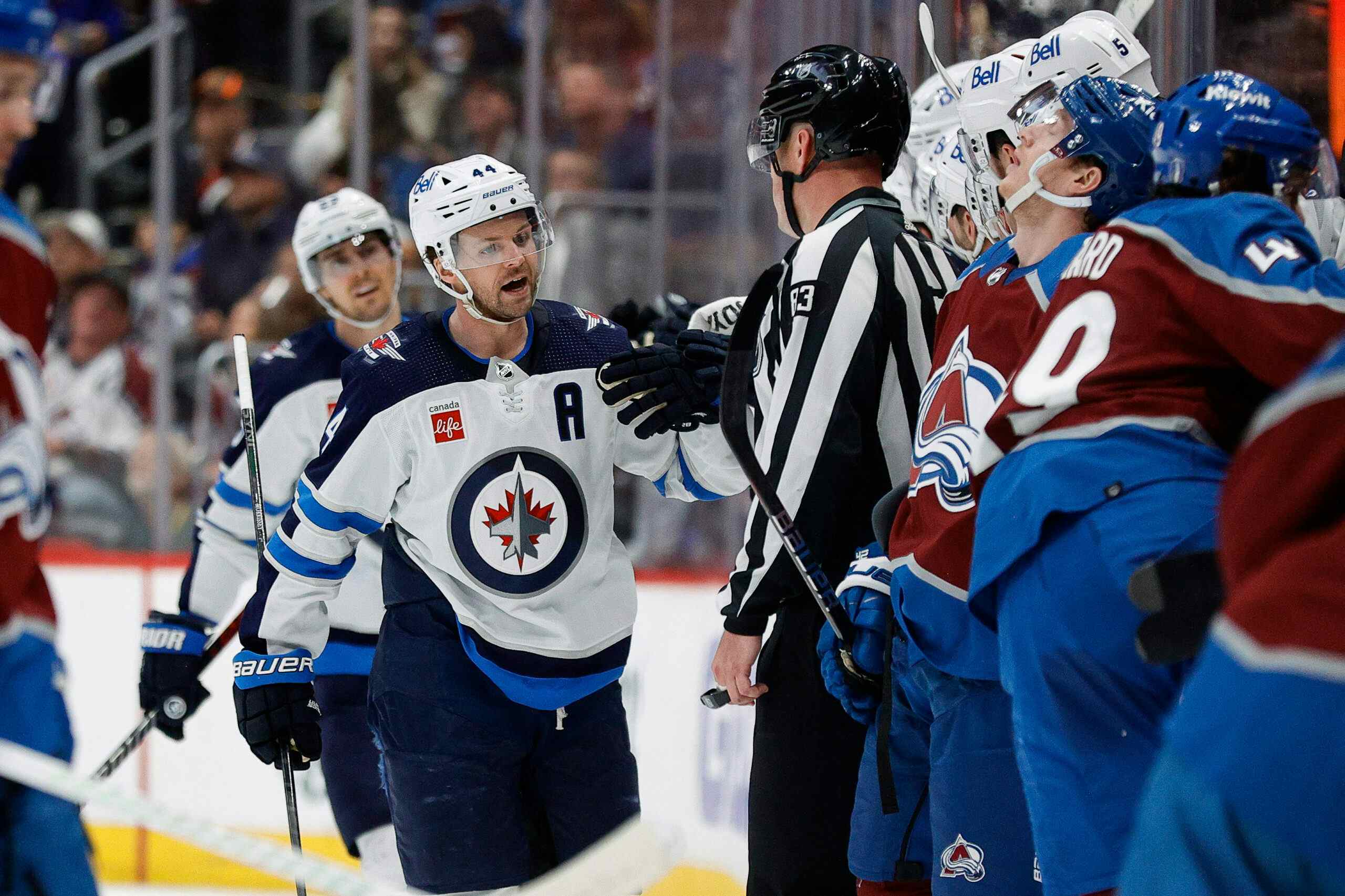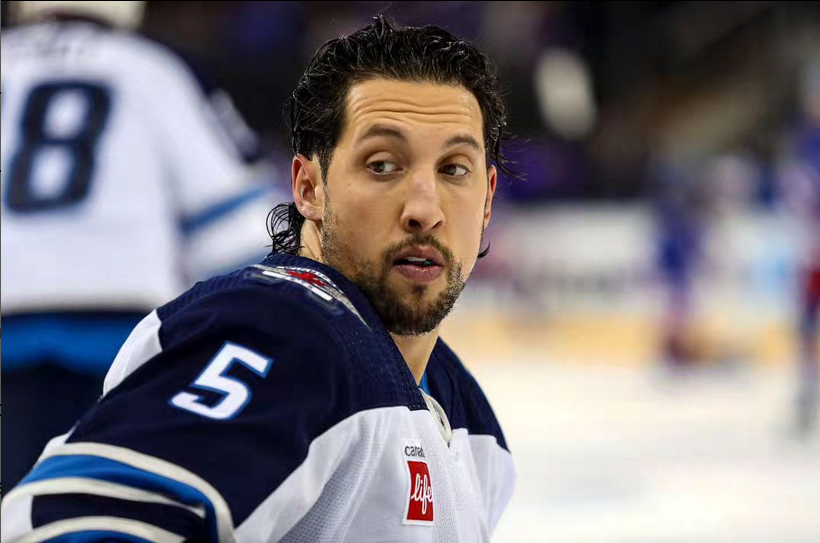Jets 2013/14 Prospect Review

During the season, we checked in a few times on the Jets’ prospects around the world. The last time was in December. I’ve never been accused of being a timely writer, but it’s still worth checking in on how the season finished for last year’s prospects and how the organization might currently see them. We’ll update our prospect list before September and set some reasonable expectations for their respective seasons.
For now, let’s look back at 2013/14 and think about the good and bad arrows for the would-be Jets.
(Apologies for the weird charts – our table editor changed since December)
*Names that are crossed out have left the organization this summer.
** % of Offence is the percentage of goals scored by the team that the player got a point on.
*** % PT Share is a stat from ExtraSkater. It measures what % of goals scored while the player was on the ice that player got a point on.
AHL
These are the players I chose to follow from the IceCaps as plausible prospects. Brenden Kichton had an outstanding year, building from a promising Young Stars Tournament to an AHL All-Rookie team spot and a Calder Cup appearance. The rookie pro famously re-entered the draft after being taken in the 5th round by the Islanders. Drafted for a second time by the Jets in the 7th, he’s already beaten his pedigree by being an impact player at the AHL level and he just turned 22 this summer. Remarkably, he was effective from opening night.
The same can’t be said for Lipon and Lowry, two of the team’s expected physical as well as scoring contributors in years to come. As is typical for young players, each of the rookie pros got off to slow starts. Lipon had just 12 points by the December break, and Lowry had a putrid 5 and some health scratches. Lipon managed 5-16-21 in the final 46 games, while Lowry went 15-13-28 in his final 43.
The team was truly led, however, by AHL veterans and (bubble) NHL journeymen. That was most evident in the playoffs, where it was Andrew Gordon who led the team in scoring by a wide margin and Zach Redmond who went a remarkable +12. Both have left the organization. We talked about the possibility each player was better suited to NHL action than Halischuk and Postma/Pardy respectively way back in training camp. We all know how that story ended.
Playoffs:
The kids fell off the map here, and some of Kichton’s minutes were eaten by Josh Morrissey’s arrival. Still, an appearance in the Calder Cup finals is a meaningful step for the organization and a good chance for these young men to play a 93 game professional season.

WHL
How about that Nic Petan guy? 113 points! And he contributed to an outrageous 34% of the team’s offence. His point share is extraordinary as well. Statistically, the kid is outstanding. From my viewings, his intelligence and control of the ice are easily as remarkable as his puck skills. Extremely exciting prospect.
Morrissey is in the same boat, delivering a remarkable season despite having just one other high-level prospect on his team (Leon Draisaitl). He nearly made the Jets out of training camp last season, and managed to play 20 AHL playoff games after winning Gold at the World Juniors and being named the WHL First All-Star team. He’ll press for an NHL opportunity a month from now, but his size might hold him back another season. (Certainly it won’t be the quality of the depth chart in front of him!)
Lukas Sutter is on the other end of the scale, having re-entered the draft this year (taken by the Islanders). All I can say is that it’s not a loss for the organization at this stage. The rumours were fitness and culture issues, so he was traded to the Rebels last season to play for Brent Sutter. Having watched him play, the problem is his extremely limited hockey awareness and the simple fact that he doesn’t think the game at speed. Twenty-three points in 45 games in a draft +2 season doesn’t happen to genuine NHL prospects, as cruel as that is to say. However, it should be remembered that the team spent a 2nd round pick on this player (in fact, #39 overall in 2012). It was the same draft that brought the Jets Hellebuyck and Kosmachuk, but to miss so dramatically at #39 is discouraging.
Blomqvist was an invite addition at the Young Stars Tournament and won a contract with his final game. He was mercifully traded away from the disasterous Hurricanes (see what I did there?) and managed 43 points in 46 games the rest of the way, as well as +24 rating. I called him the Swedish Dustin Penner last September, and I stand by it. When he turns pro, people will be constantly talking about how he should be more physical and mean. It’s his ability to create space that makes him so valuable, though, and I’m excited to see his growth year over year.
Ryan Olsen is a neat one. He played well in a two-way role for a terrific club. He’s got size, speed, some grit, enough hands to help. At the same time, this was his draft +2 season and we can see that he was a limited contributor for the team or for his line. 60% point share is effectively random generator territory for forwards. It didn’t die on his stick, but he didn’t make it happen either. He’s got a contract and improved year over year every season of Junior. It’s possible he beats his 6th round pedigree with a cup of coffee as early as 2015/16.
Eric Comrie turned pro after this season and had a couple forgettable games for St John’s to cap off a successful year as the workhorse in the Tri-Cities. He improved year over year (.915 to .925) and took on a huge workload. He’s listed at 6’1″ these days, but may be smaller and is definitely ‘Ryan Miller slight’ at this stage. His lateral movement is his strength, but some injury trouble has disrupted his development. He’s a hopeful starter for Canada’s World Juniors team this coming December after a successful step forward in his draft +1 season.
OHL
Kosmachuk completely changed his station in NHL prospect rankings with his draft +1 season. I had kind words about him as far back as last September at the Young Stars tournament, where I thought he looked like a superb scorer being put in the wrong role. This season was a stunning breakout (he had 65 points in his draft year), and he finished 3rd in OHL scoring. He added 28 points in 20 playoff games, for a total of nearly 130 points to lead Guelph to a championship. Perhaps most encouraging is that his point share (contribution on goals scored while he’s on the ice) is elite, suggesting that the play runs off his stick on 4 out of every 5 ideal outcomes.
Jimmy Lodge moved in the opposite direction. When we looked in December, the scoring string bean had 32 points in 29 games and contributed to 24% of the team’s goals. In his final 30 games, he went 7-7-14 and -3. It’s hard to know whether he lost minutes, acquired an injury, or just got the ‘yips’ from this distance. If anyone was watching Saginaw this year, maybe you can let us know in the comments?
QMJHL
Kostalek is one of my favourite Jets prospects, but he had literally the strangest season I’ve ever seen statistically. It’s very hard to tell what was happening with this young man, as he played in all three disciplines and for heavy minutes (so the coach trusted him), he got a bucket of shots so we know he was in the offensive zone, but he contributed to fewer goals scored while he was on the ice than even Samuel Bourque – the 16 year old rookie defender who got 9 points on the whole season.
The concern with him is his offence. He was a strong scorer in the Czech league and projected as a late 1st rounder. He fell to the 4th round where the Jets took him because his offence disappeared crossing the pond. I had hopes it was an off year (can you imagine moving from the Czech Republic to Rimouski at 17 years old?), and I really liked his Young Stars Tournament. But if there was ever a player to label as ‘enigmatic’ (I know he’s not Russian), he might be it. My scouting comment was that he adjusted his game to be the opposite of his defence partner’s – like a hockey chameleon. Statistically, it seems like he was doing two seemingly differnet things at once – earning minutes and not contributing.
NCAA
* Indicates the player didn’t play every game, but I couldn’t track down the goals they missed. Their share of offence is actually higher than stated.
Copp had a statement World Juniors this season. He only managed 5 assists in as many games, but was a visible player and made a mess for opposing teams. Big, strong, and always in the middle of the dirty areas, Copp has ‘pro’ written all over him. After ending his Freshman season with 20 points in 24 games, he started his Sophomore year in a scoring role. He was second in scoring on his club (behind 2nd round Sabres selection JT Compher) and by all reports, a leader in every area. Michigan lost some luster as a development program after Dean Lombardi’s harsh words back in 2010, and this player transitioned from football after high school. He has a lot of learning to do, and the concern is about his hockey sense, even if he plays a relatively simple game.
Speaking of Buffalo, the Jets moved graduating power-forward Jordan Samuels-Thomas to the Sabres this off-season rather than sign him. It’s a bit of an odd move, as Samuels-Thomas is a big-bodied winger with hands – precisely the player the Jets seem to love. Heck, they moved Byfuglien to forward to get a net presence, and then traded Samuels-Thomas for a 7th. The verbal has always been good and he managed to score even after his powerplay time declined this season, so I don’t understand the trade at this stage. He was a former 7th rounder himself, but it’s yet another example of questionable asset management by this group.
It’s harsh to say, but it’s unlikely anyone else on that list has an impact in pro hockey.
The best news this team could ever receive is that Connor Hellebuyck turned pro this summer. He’s the anti-Pavelec – a steady, wall-like goalie who plays the same way in an exhibition blow out and a tight playoff game. His college career was two years long and absolutely outstanding. If this team was a meritocracy, he’d have a shot at the NHL starting job as of this training camp. Instead, expect him to take the reigns at the AHL level by Christmas at the latest.
Meanwhile, Jason Kasdorf (not listed) missed the year with an injury and Jamie Phillips struggled in a back-up role. It’s a cruel world with a very limited window to impress. Kasdorf has an impressive Freshman year (.935 in 23 contests) and we can hope he returns to form. Still, accumulating positive arrows in development requires opportunity and health, along with talent, effort and more. As it stands, it was a lost season for both players (as well as Jussi Olkinuora), leaving Hellebuyck and Comrie well in the lead for further opportunities at the pro level in this organization.
Other
Last we checked, Burmistrov had 30 points in 38 games. He still finished as the team’s highest scorer (ahead of Tim Stapleton for die hards), but 8 points in his final 16 games takes some of the polish off his ‘see what I can do’ season for Ak Bars. A personal 2 points and -7 finish during a first round playoff exit is regrettable and forgettable. Regardless, the Jets miss him badly, and he would be an instant upgrade in the top-9 on this side of the Pacific.
Also in this category are two late-round defenders.
Tucker Poolman was a 5th round choice as an over-age player and spent his 20 year old season on a stacked Lancers team in a good-not-great league that typically serves as a pool of talent for the NCAA. It’s a hard spot to evaluate a player from, but he did every positive thing you can imagine. He was named USA Hockey’s Player of the Year, and to the USHL First All-Star team. He was third in league scoring among defenders and played in all three disciplines (including on the USHL’s best PK unit). He’s off to North Dakota next year, giving the Jets plenty of time to watch him grow. The concern with this player is that over half his points (22) came on a powerplay led by stand-out Jake Randolph (league leading 86 points), and his plus/minus improved year over year (-7 to +20) in part due to a change in goaltending. This is equivalent to a draft +2 season and we expect NHL-worthy prospects to be dominant at that stage, but we also expect them to dominate in more competitive leagues with less help.
Marcus Karlstrom was an off-board 7th rounder playing in a relatively low-level Swedish league (think of it as Junior A in a country where even fewer Junior A players ever turn pro). The team wasn’t great this year and missed the playoffs. Still, they won the Continuation Division (consolation playoffs) and Karlstrom led the team’s defenders in scoring. He’s miles from NHL relevant, but he’s doing well where he’s at.
Sum It Up
The overall picture is healthy. There were lost seasons for Kasdorf and Phillips, a handful of NCAA skaters, and Lukas Sutter. Jimmy Lodge was on track in December, but lost his way. For all these players, the window is so small that a few months of bad luck can be all the difference.
At the other end, positive arrows for Petan, Morrissey, Hellebyuck, Kichton and Kosmachuk suggest NHL-difference makers are on the way, and good seasons by Copp, Poolman, Lipon, Lowry, Blomqvist, and Comrie suggest the organization has genuine prospect depth for the first time in its history.
The real concern is at the organizational level. The organization has intentionally invested later draft picks in over-age players from lesser leagues headed to college. It’s a fine strategy, as guessing what kind of professional an 18 year old will be is a fool’s game. The strategy has the potential to yield more NHL bodies, but requires a longer timeline. The concern is not with the strategy itself, but with asset management starting the day after the draft and Jordan Samuels-Thomas is a tell in that regard. The organization sunk a 7th round draft pick (low value) into the player in 2009, but also 5 years of time since. We know he wasn’t well regarded in the organization, as he was not invited to the 2013 development camp and was not generally spoken about by management. He apparently asked to be moved, and the return was another 7th round pick – one we will presumably have to wait 5 more years to evaluate. Few 7th rounders make it as close to pro hockey as Samuels-Thomas has and so there is a risk in trading him at this stage. As well, there is the risk of opportunity costs associated with being the development system for other NHL clubs.
It’s a draft-and-follow strategy and we’re not certain how well the Jets intend to follow, support, and develop their assets. That’s a serious worry – especially for a team that claims to be building through the draft.
Recent articles from Kevin McCartney





